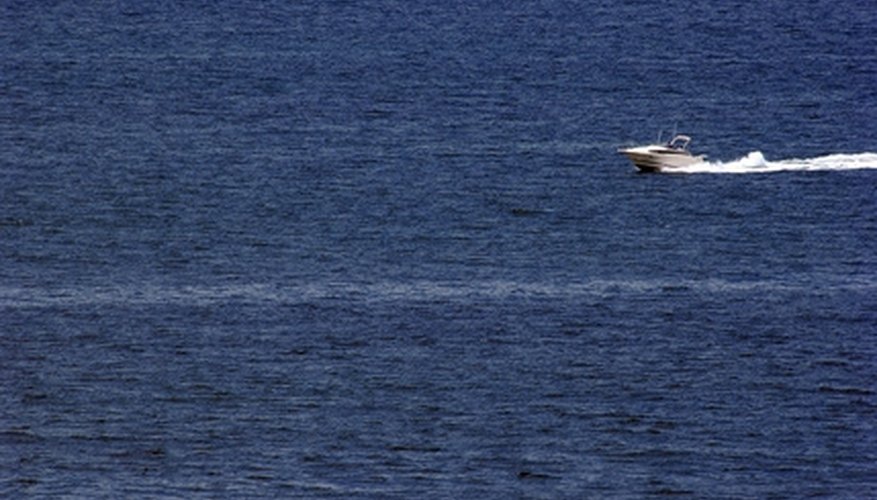
An outboard motor's forward and backward movement, including speed, is controlled by the throttle. The throttle increases or decreases engine speed, which increases or decreases the propeller's rotation, thus thrusting the vessel forward or backward. The throttle control can be adjusted so that its friction makes operating the vessel comfortable and safe. It can also be adjusted, while operating the vessel, to change speeds.
Items you will need
Screwdriver
Adjust the throttle friction with the adjustment screw that's typically below the throttle on the tiller. Set it until you feel a slight drag on the handle when accelerating or decelerating. Clockwise increases friction, and counterclockwise decreases it. The idea is to set the throttle friction so that it's not too much effort holding a speed but not so much that you can't make quick adjustments in response to changing operating conditions.
Adjust the throttle itself. Start the engine and, with the engine running, twist the throttle grip. Twist it counterclockwise from the "Idle" position to increase speed and clockwise to decrease speed. If there's a throttle lever rather than a throttle grip on the tiller, move the lever in increments to increase or decrease throttle.
Make adjustments to the throttle depending on operating conditions. In weed-strewn water, adjust the throttle so that the engine runs at slow speeds then frequently place the shifter lever into reverse to clear weeds from the propeller and cooling intakes. Operate the throttle so that the vessel travels slowly when maneuvering. Use the throttle to speed up outside of safe harbor on open water.
References
- "Johnson 4-Stroke Outboard Operator's Guide"; BRP U.S. Inc.; 2006
Writer Bio
Patrick Nelson has been a professional writer since 1992. He was editor and publisher of the music industry trade publication "Producer Report" and has written for a number of technology blogs. Nelson studied design at Hornsey Art School.



